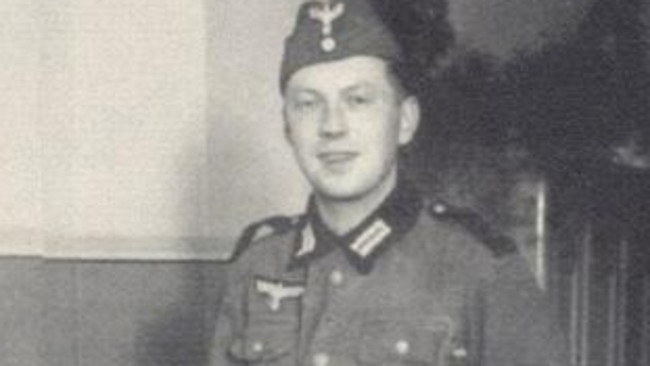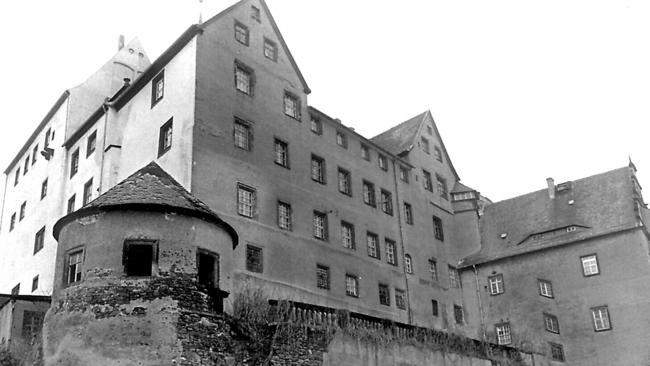Colditz escapee survived the Nazis to die at Irish hands
Only four POWs had successfully fled the German fortress when English Territorial Army Lieutenant Airey Neave and his Dutch partner Tony Luteyn walked out on January 6, 1942.

Today in History
Don't miss out on the headlines from Today in History. Followed categories will be added to My News.
The formidable walls of Colditz Castle, rising 76m above the chill waters of the River Mulde in eastern Germany, were a grim deterrent to Allied prisoners of war captured in the early battles of World War II.
Only four POWs had successfully fled the German fortress when English Territorial Army Lieutenant Airey Neave and his Dutch partner Tony Luteyn walked out on January 6, 1942.
Neave, born 100 years ago today, on January 23, 1915, was the first British serviceman to escape Colditz.
Born in London, he grew up in a large home near Knightsbridge, funded by his entomologist father Sheffield’s generous trust fund. Neave attended Eton College from 1929, serving in the school cadet corps as cadet lance corporal. After visiting Germany, in 1933 he wrote a prize-winning essay about the likely consequences of Adolf Hitler’s rise to supreme power, predicting widespread war in Europe in the near future.
As a student at Merton College, Oxford, he purchased and read the entire 1816-30 works of Prussian general and military theorist Carl von Clausewitz. Asked why, Neave explained, “since war (is) coming, it (is) only sensible to learn as much as possible about the art of waging it”.
Neave completed a third-class degree in jurisprudence in 1938, admitting he only completed the minimum academic work required by his tutors. On graduation, he reputedly threw a party for 40 guests, where they consumed “literally hundreds” of bottles of champagne, although Neave put the number at 97.

Joining the Royal Engineers in May 1938, he was sent to France in February 1940 with a Searchlight regiment. He defended Coulogne village with 70 men, two Bren guns and an antitank gun during the British defence of Calais, ordered by Winston Churchill to hold back a German Panzer advance as thousands of British soldiers were evacuated at Dunkirk.
Hit in the thigh by a German tracer bullet on May 24, Neave was captured on May 26, 1940, while lying on a stretcher at a hospital at Lille.
He was put on a coal barge and shipped to Germany to join an overcrowded troop train sending 4500 British prisoners to Spangenberg Castle, later Stalag IX-A. In February 1941 prisoners were moved to dank cellars in a fortress on the Vistula River near Thorn, in German-occupied western Poland.
Nearby was Stalag XX-A, where Neave hid out for five days with Flying Officer Norman Forbes before their first escape attempt, which ended after four days on the run at a control point outside Warsaw. Handed to the Gestapo, who discovered Neave had an escape map, both were interrogated for 10 days under suspicion as spies, then returned to solitary confinement at Thorn.
Released after a month, within weeks both were moved to the supposedly escape-proof Oflag IV-C, later notorious as Colditz. The 1000-year-old fortress was in the heart of Hitler’s Reich, 640km from frontiers. But the camp was busy, visited by civilian maintenance workers, medics and Swiss Red Cross observers.
As well as organising escape committees, prisoners entertained themselves with plays and revues, while Polish inmates ran a camp Olympics in August 1941, competing in football, volleyball, boxing and chess. The most popular sport was stoolball, invented by prisoners. It resembled rugby, with stools at either end of the prisoners’ courtyard. Goals were scored by knocking goalies off their stool.
Neave made his first escape attempt in mid-1941, dressed as a German corporal in a Polish officer’s uniform disguised with stage paint, cardboard insignias and a fake carved bayonet. A German sentry foiled the attempt when Neave handed over a missing security disk. He tried again on January 6, 1942, with Dutch officer Lutyen. Again dressed in painted German officer’s uniforms with fake insignia, they dropped through a trapdoor on a stage floor, then cut through a storeroom ceiling.
Chatting in German, they walked past sentries. Challenged by a sentry at the main gate, Luteyn cried out in German: “Why don’t you salute?”
They turned east and, in freezing darkness, clambered down the moat and up over an unguarded wall. They shed German greatcoats to emerge in labouring garb, carrying forged papers identifying them as foreign workers.
Armed with maps, likely smuggled into Colditz in gramophone records, they travelled for four days before crawling across the Swiss border.
Neave was awarded a military cross in 1942 and joined intelligence agency MI9 to aid future POW escapees.
Elected as a Tory MP in 1953, Neave campaigned for Margaret Thatcher in the 1975 British Conservative Party leadership spill and became her close adviser. He died after a bomb explosion destroyed his blue Vauxhall sedan at 2.59pm on March 30, 1979, a murder claimed by the Irish National Liberation Army.
Originally published as Colditz escapee survived the Nazis to die at Irish hands


